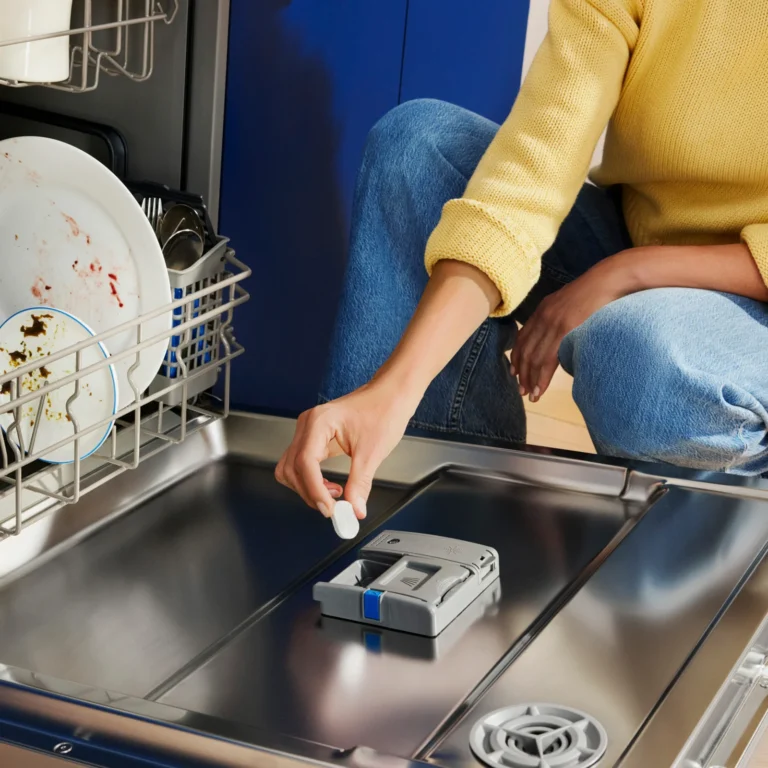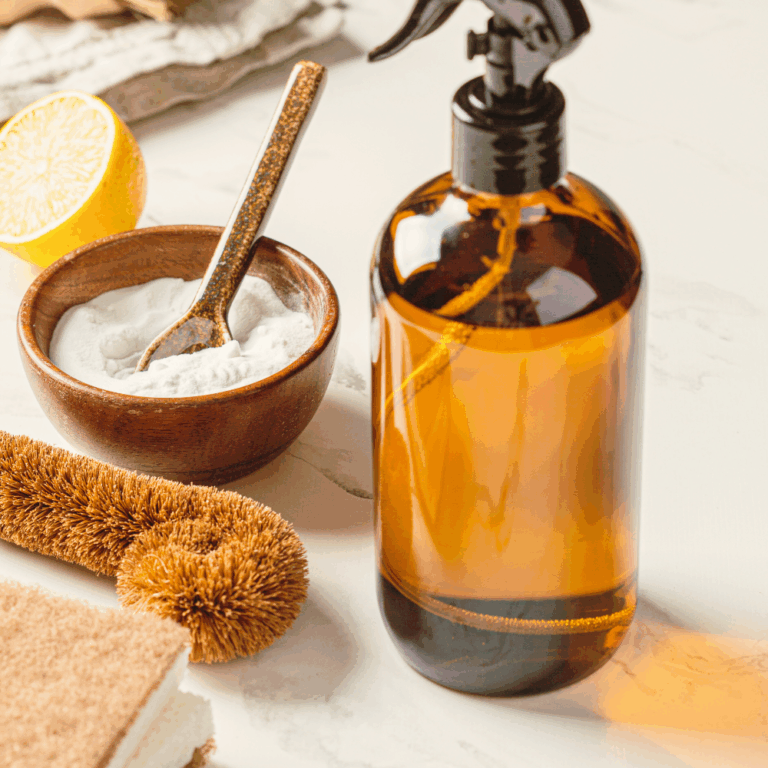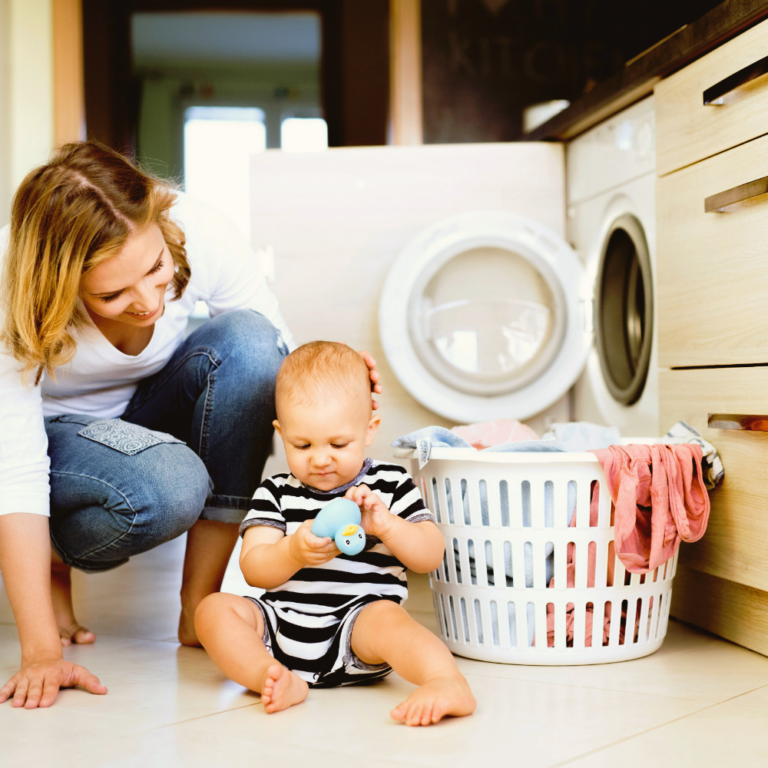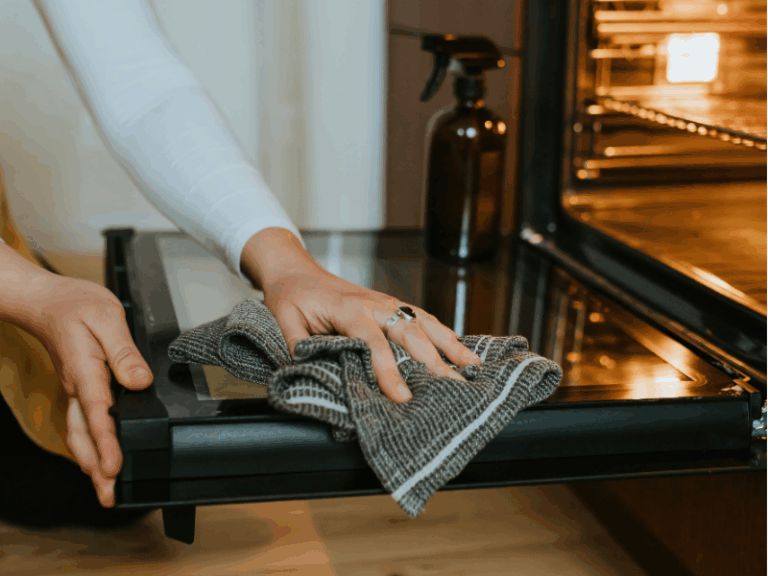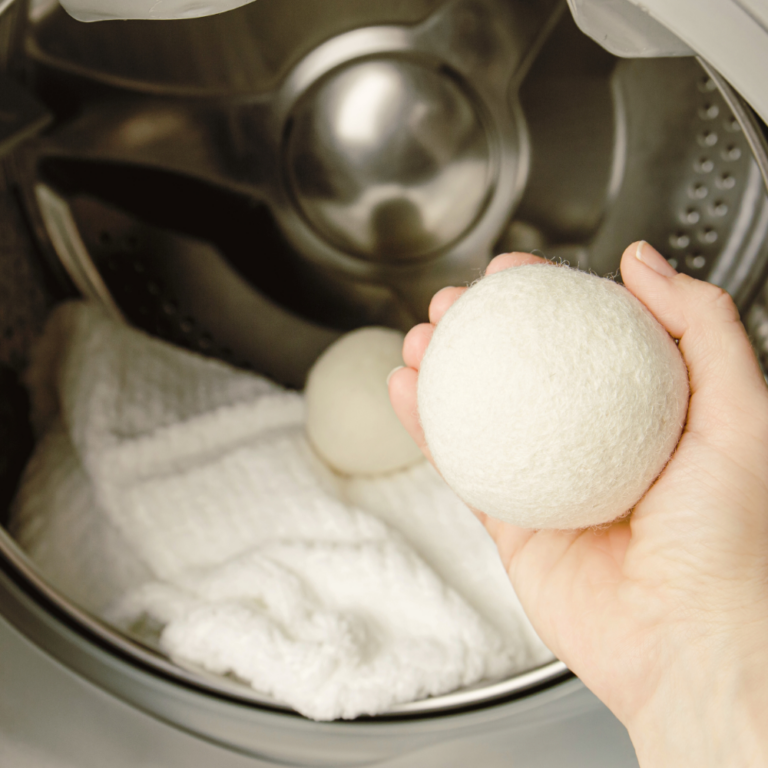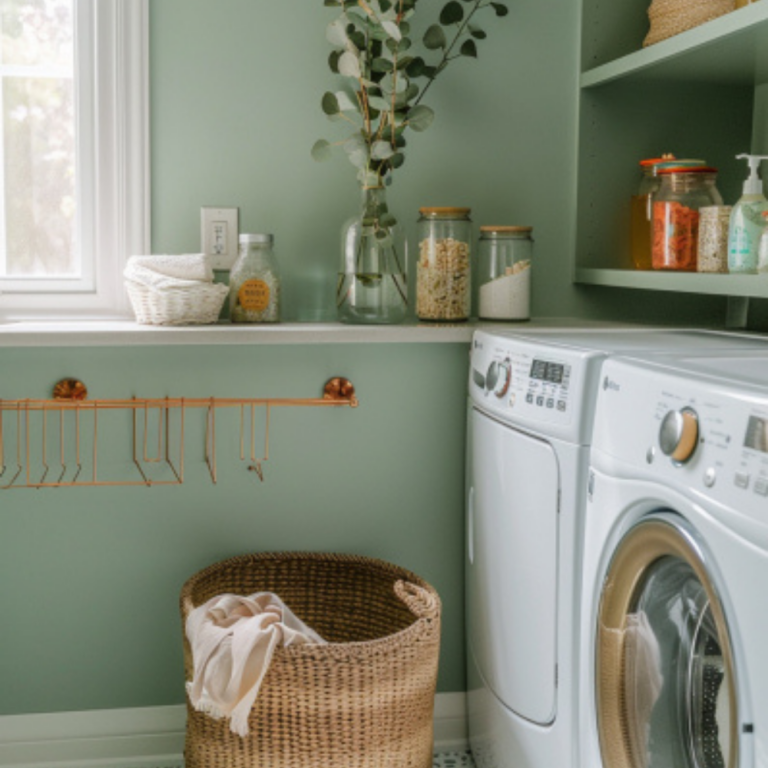
Key Takeaways
- Homemade laundry powder detergent saves money and avoids harsh chemicals found in many store-bought products.
- Switching to DIY detergent helps cut down on the 1 billion plastic jugs discarded in the U.S. each year.
- Homemade laundry powder keeps things non-toxic and safe, without the unnecessary chemicals found in many store brands.
Most people grab whatever laundry detergent is on sale or promises the freshest scent. But there’s another option: making your own laundry powder at home. Homemade laundry detergent can be gentle on the skin, effective on everyday stains, and significantly more affordable than store-bought brands. It also reduces plastic waste since you don’t need bulky jugs or single-use pods wrapped in plastic film.
In the U.S. alone, approximately 1 billion plastic detergent jugs are discarded each year, with only 30% being recycled. That leaves roughly 700 million jugs heading to landfills or waterways annually. Switching to a simple, non-toxic homemade recipe is one small change that protects your health, your wallet, and the environment simultaneously.
Why Choose Homemade Laundry Powder Detergent?
Choosing homemade laundry powder detergent isn’t just a trendy DIY—it’s a practical swap that brings real benefits for your health, your wallet, and the planet. From knowing exactly what goes into your detergent to cutting back on plastic waste, this simple switch can make your laundry routine cleaner and more sustainable.
Cleaner Ingredients
Making your own laundry powder means you know exactly what’s in it and what’s not. Many store-bought detergents can contain a cocktail of chemicals like synthetic fragrances, optical brighteners, phosphates, and sulfates.
- Synthetic fragrances can contain dozens of undisclosed chemicals linked to allergies and hormone disruption.
- Optical brighteners coat fabrics to look “whiter,” but can cause skin sensitivity and wash into waterways.
- Phosphates soften water but contribute to algae blooms that harm aquatic life.
- Sulfates (SLS/SLES) create foam but can strip natural oils and irritate skin.
By skipping these additives, homemade laundry powder avoids unnecessary chemicals, leaving you with a detergent that’s gentler on your skin, safer for your home, and kinder to the environment.
Gentler on Skin
- Dyes add no cleaning benefit but can cause rashes or eczema flare-ups.
- Optical brighteners leave a chemical coating on fabrics that may irritate sensitive skin, especially in children.
Safer for Your Home Environment
Detergents with synthetic fragrances and solvents often release volatile organic compounds (VOCs). These chemicals can lower indoor air quality, leading to headaches, asthma flare-ups, or respiratory irritation. Homemade detergent helps avoid these pollutants, keeping your air cleaner as well.
By making your own detergent, you skip these unnecessary additives. The result is a laundry powder that’s gentler on sensitive skin, reduces exposure to irritants, and supports a healthier home environment.
Budget-Friendly
A few simple ingredients like washing soda, Borax, and bar soap can last for months and cost far less than store-bought detergents. Plus, you can tweak recipes however you like, add essential oils for scent, mix in baking soda or oxygen booster for extra cleaning power, or keep it fragrance-free and minimal.
Reduces Plastic Pollution
One of the biggest wins? Cutting down on plastic waste. By storing your homemade powder in reusable containers—even if they’re plastic—you’re reusing the same container again and again instead of tossing bulky jugs or single-use pods after every purchase. That simple swap helps reduce plastic pollution and keeps more microplastics out of our waterways.
📝 Ingredients and Supplies You’ll Need
Making homemade laundry powder is simple, but the ingredients you choose shape how well it works for your family’s needs. Depending on which recipe you follow, you’ll be using some (not all) of the items below. This list explains what each ingredient does and why you might select it so that you can pick the best combination for your laundry routine.
⚡ Washing Soda & Baking Soda
Both show up often in DIY cleaning, but they’re not the same:
- Washing soda (sodium carbonate) – higher pH, powerful on grease, stains, and water softening.
- Baking soda (sodium bicarbonate) is a gentler option, great for deodorizing and controlling odors.
- Some recipes use both; if you have to pick one for cleaning strength, go with washing soda.
🧼 Main Cleaning Agents
- Borax – Classic laundry booster that helps lift stains and softens hard water.
- Bar Soap – Options include Fels-Naptha (tougher on stains) or Castile soap (plant-based and gentle for sensitive skin). Always grate finely for the best dissolving.
💪 Optional Boosters & Add-Ins
- Oxygen bleach (like Blueland Oxi Booster or natural alternatives like hydrogen peroxide + washing soda) – Tackles tough stains.
- Epsom salt or sea salt – Natural fabric softeners.
- Essential oils – Add a fresh, natural scent without synthetic fragrances (lavender, citrus, eucalyptus).
🛠 Tools That Make It Easier
- Cheese grater or food processor – Speeds up breaking down bar soap.
- Large mixing bowl or enamel/stainless steel pot – Ideal for bigger batches; stir in layers or fold together by hand, like kneading dough.
- Airtight container – Keeps powder dry, clump-free, and ready to use.
Safety and Environmental Impact of Homemade Laundry Powder
Homemade laundry powder is often a safer, greener choice, but the ingredients you select matter. Some are gentle and eco-friendly, while others work well but may not be the right fit for every household. Here’s a quick guide to help you decide what belongs in your recipe.
| ✅ Safer, Eco-Friendly Choices | ⚠️ Use with Care / Optional |
|---|---|
| Baking soda & washing soda – Gentle, effective, and biodegradable | Borax – Brightens and boosts cleaning, but can irritate sensitive skin |
| Castile soap – Plant-based, vegan-friendly, and safe for sensitive skin | Fels Naptha & Zote – Effective stain fighters, but not plant-based and carry strong scents |
| Reusable jars or canisters – Cut down on single-use plastic waste | Essential oils – Natural fragrance, but can cause sensitivities; use sparingly |
| Oxygen bleach (sodium percarbonate) – Biodegradable booster safe for water systems | Scent boosters & fabric crystals – Often contain synthetic dyes and fragrance |
✨ Pro Tip: Always test a new recipe on a small load before using it for all your laundry—especially if you’re adjusting ingredients.
5 Homemade Laundry Powder Recipes to Try
Switching to homemade laundry powder isn’t just about saving money; it’s also a simple way to cut down on plastic waste. No more bulky jugs or plastic pods that leave behind microplastics in our waterways. These five recipes use basic, eco-friendly ingredients you can store in reusable containers, helping you keep your clothes clean while keeping plastic out of your home.
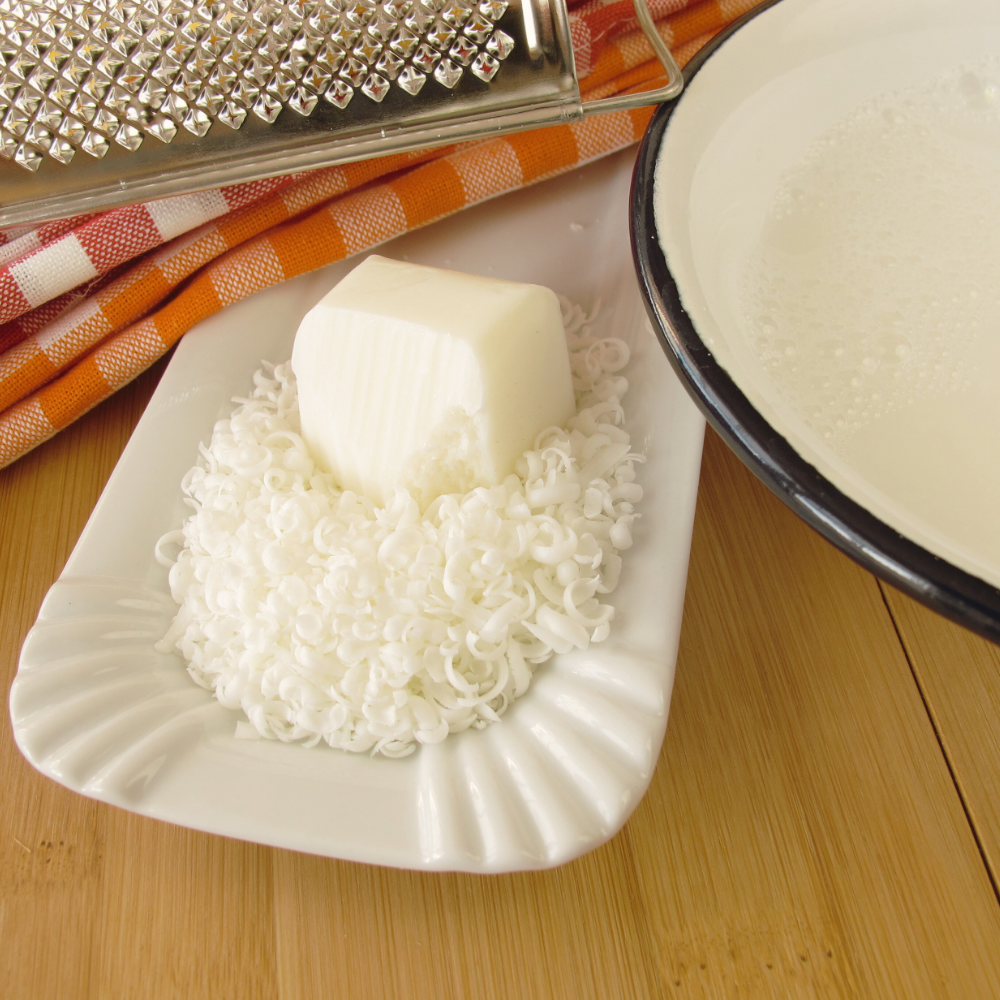
1. Classic 4-Ingredient Powder
- Ingredients:
- 2 cups washing soda
- 2 cups baking soda
- 2 cups Borax
- 1 bar Castile or Fels-Naptha soap, finely grated
- Directions: Grate the soap, then mix all ingredients in an airtight container.
- Use: 1–2 tablespoons per load.
- Why it works: Washing soda and Borax lift stains, baking soda deodorizes, and soap provides the cleansing surfactants.
2. Minimalist 3-Ingredient Powder
- Ingredients:
- 2 cups washing soda
- 2 cups Borax
- 1 bar Castile or Fels-Naptha soap, grated
- Directions: Mix until well combined.
- Use: 1–2 tablespoons per load.
- Good for: People who want a simple, no-frills recipe with fewer ingredients.
3. Sensitive Skin Powder (Borax-Free)
- Ingredients:
- 2 cups washing soda
- 2 cups baking soda
- 1 bar unscented Castile soap, grated
- Optional: 10–15 drops lavender or chamomile essential oil
- Directions: Combine in a large jar or bucket.
- Use: 1 tablespoon per load.
- Why it’s gentler: Leaves out Borax, which can irritate sensitive skin for some families.
4. Heavy-Duty Cleaning Powder
- Ingredients:
- 2 cups washing soda
- 2 cups Borax
- 1 cup baking soda
- 1 bar grated soap (Castile or laundry bar)
- Optional: ½ cup oxygen booster (like Blueland Oxi Booster or a non-chlorine bleach powder)
- Directions: Mix all together.
- Use: 2 tablespoons per load.
- Best for: Heavily soiled laundry, sports uniforms, or pet bedding.
5. Eco-Friendly Vegan Powder
- Ingredients:
- 2 cups washing soda
- 2 cups baking soda
- 1 bar vegan Castile soap (like Dr. Bronner’s), grated
- 10 drops of lemon or eucalyptus essential oil
- Directions: Blend grated soap into a fine powder, then mix with other ingredients.
- Use: 1–2 tablespoons per load.
- Eco bonus: Plant-based, biodegradable, and lightly scented.
Store in an airtight container
Put your finished detergent into a sealed container to keep moisture out. Glass jars with tight lids or steel canisters work well. Keep your scoop dry, too, to avoid clumps forming over time.
✨tips
Pro Tips for Perfect Powder
- Always store powders in an airtight container to prevent clumping.
- Use a food processor to blend grated soap into a fine powder — it dissolves better in cold water.
- For HE machines: stick to 1 tablespoon per load to avoid excess suds.
- Always label your container and keep it away from children/pets.
- Mixing for Larger Batches: When preparing a large batch, using a large enamel or stainless steel pot or bowl makes mixing easier. You can stir in layers or even use your hands to fold everything together — kind of like kneading bread dough.
Is Homemade Laundry Detergent Effective?
Homemade laundry powder is a reliable option for everyday cleaning when you use trusted ingredients like washing soda, borax, and a good bar soap. Although it may not be perfect for every situation, many people find it cleans well without the added cost or harsh chemicals of commercial detergents.
Tackling everyday stains and messes
Homemade detergent works well on lightly to moderately dirty loads. It cleans dirt, body oils, and odors without trouble. If you add boosters like OxiClean, baking soda, or a natural stain remover, it can also handle tougher stains like grass or food. For really stubborn spots, pre-treating or soaking the item before washing can make a big difference.
How it compares to store-bought detergents
Compared to brands like Tide powder laundry detergent or Molly’s Suds, homemade versions clean well under normal conditions. What you won’t get are the synthetic surfactants and enzymes that some commercial options use for high-performance stain removal. For those who prefer fewer chemicals and more transparency in ingredients, homemade detergent is a worthwhile tradeoff.
A better choice for sensitive skin and HE machines
Without added dyes, artificial fragrances, or harsh preservatives, homemade detergent is often a gentler option for people with skin sensitivities. It is also low-sudsing by nature, which makes it a good match for high-efficiency (HE) washers. Just be sure to use the correct amount, as too much powder can leave behind residue in any machine.
Cost savings that add up
One of the biggest perks of making your detergent is how much money you can save. A single batch usually costs just a few dollars and can last for weeks. Compared to buying store-bought powders or liquids, the difference adds up fast, especially if you do a lot of laundry.
Make it your own: Ingredient swaps and scents.
The great thing about homemade laundry powder is how easy it is to tweak to your liking. Whether you want to leave out certain ingredients, skip the bar soap, or add your favorite scent, you have complete control to make it just right for you.
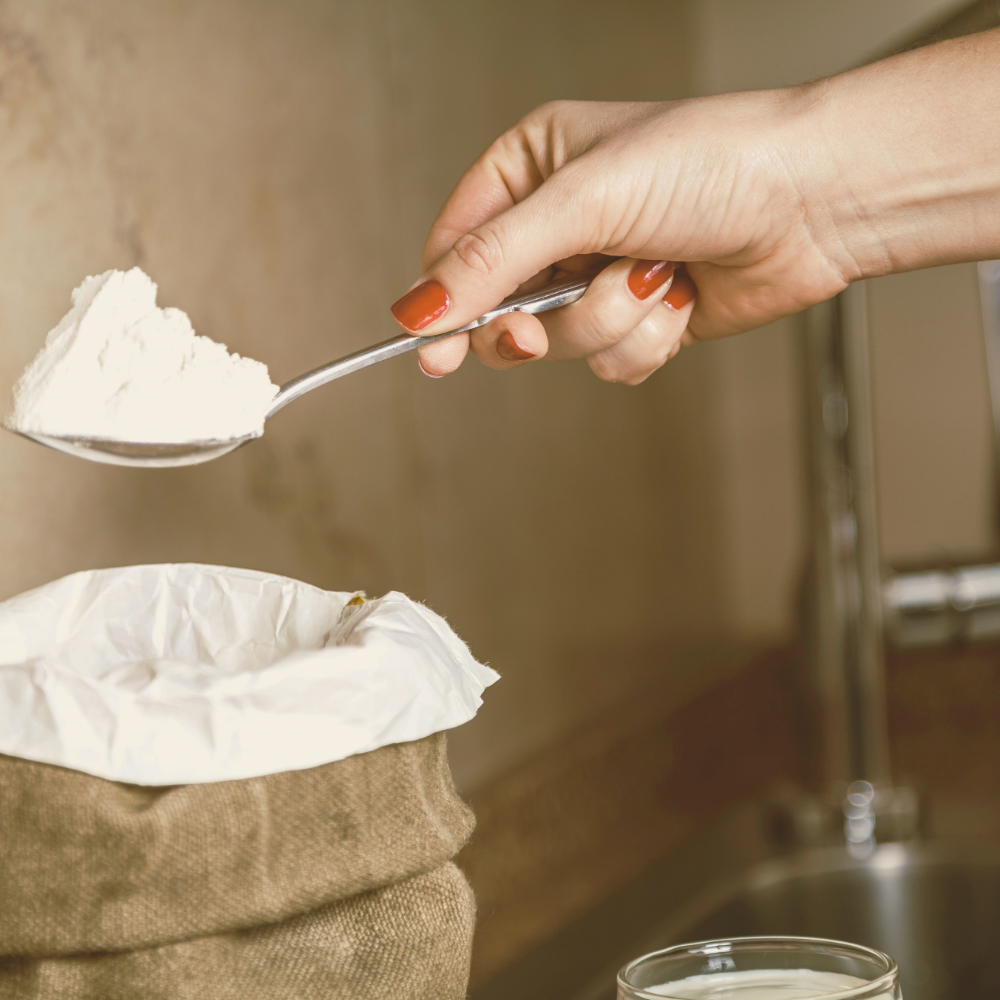
Recipe Variations
Homemade laundry detergent doesn’t have to stop at powder. With a few tweaks, you can turn the same basic recipe into handy tablets or even a liquid version.
Tablets
Instead of scooping powder for every load, you can press it into simple pre-measured tablets. A little splash of liquid—like vinegar or water—helps the powder hold together in molds or ice cube trays.
- Great for kids, teens, or anyone who’d rather not measure.
- Handy for travel since they’re lighter and less messy than liquid detergent.
- Easy to make in bulk if you’ve already mixed up a batch of powder.
Liquid Versions
Prefer liquid detergent? You can make your own by dissolving the powder and soap in hot water. Start with Borax, washing soda, and grated soap in a gallon-sized container, add hot water to melt everything down, then fill the rest with cool water.
- A good option if you find powder doesn’t dissolve well in cold cycles.
- Works in any container you have on hand.
- Stays effective for weeks when stored with a tight lid and given a gentle shake before use.
✨tips
How to Get the Best Results with Homemade Laundry Powder
Using homemade laundry powder is straightforward, but a few tips can help you get the best results and keep your washer happy.
- Recommended amounts per load: Generally, 2 to 3 tablespoons of homemade detergent per standard load works well. For heavily soiled or larger loads, you can increase to 4 tablespoons. Avoid using too much, as excess detergent can leave residue on clothes and inside your machine.
- Compatible with HE washers: Homemade powder tends to be low-sudsing, making it a good fit for high-efficiency (HE) washing machines. Use the detergent dispenser as you usually would. If your machine has an “extra water” or “deep fill” setting, using it can help the powder dissolve better, especially in cold water washes.
- Dissolving detergent properly: To prevent clumps and residue, you can dissolve the detergent powder in a small cup of hot water before adding it to the washer. This is especially helpful if you wash in cold water or have a front-loading machine.
- Pre-treatment and stain care: For tough stains like grass, grease, or wine, a little pre-treatment goes a long way. Use a paste made from detergent powder mixed with water or a dedicated pre-treatment spray. Let it sit for 10 to 15 minutes before washing as usual.
- Add vinegar in the rinse cycle: Adding half a cup of white vinegar during the rinse cycle helps break down any leftover detergent residue and softens fabrics naturally. It also helps keep your washer fresh and free from buildup.
FAQs About Homemade Laundry Powder Detergent
Clumping occurs when your homemade powder absorbs a small amount of moisture from the air. Don’t worry, it’s still good to use! To keep it fresh, store your detergent in a sealed container somewhere cool and dry. If you do find clumps, break them up with a spoon or give the powder a quick sift before scooping it into the washer.
Yes, but sometimes powders don’t dissolve completely in dispensers, especially when using cold water. If this happens, add the detergent directly to the drum or dissolve it in water first.
Homemade laundry powder does a solid job on everyday dirt, sweat, and light stains. But tougher spots—like grass, grease, or even food spills—sometimes need a little extra attention. For grass stains, try making a quick paste by mixing a small amount of your laundry powder with water and rubbing it directly onto the stain before tossing it in the wash. For grease or oil, a dab of liquid dish soap can help break it down. You can also soak stained clothes in warm water with a scoop of your powder for 30 minutes before washing.
For a standard load, 2 to 3 tablespoons usually works well. For heavily soiled laundry, you can increase it to 4 tablespoons.
Final Thoughts on Homemade Laundry Powder Detergent
Switching to homemade laundry powder isn’t just a way to save money; it’s also better for your health and the planet. By using simple, safe ingredients, you avoid the harsh chemicals often found in many store detergents. Plus, you avoid all those bulky plastic jugs and pods that pile up as waste.
You can make the recipe fit your needs, add a little extra for tough stains, keep it gentle for sensitive skin, or leave it unscented if you prefer. Every load you wash with homemade powder is one more step toward less plastic, fewer microplastics, and a cleaner home.
🗨️Will you try making your own laundry powder detergent, or have you already made the switch? I’d love to hear what recipes or tips have worked for you—share your thoughts in the comments!
📚References
- Belsito, D. V., Fransway, A. F., Fowler, J. F., Sherertz, E. F., Maibach, H. I., Mark, J. G., Rietschel, R. L., Storrs, F. J., & Nethercott, J. R. (2002). Allergic contact dermatitis to detergents: A multicenter study. American Journal of Contact Dermatitis, 13(2), 69–76. https://pubmed.ncbi.nlm.nih.gov/11807430/
- Dirty Labs. (2021). What are optical brighteners and why should you care? Dirty Labs. https://dirtylabs.com/blogs/the-dirt/what-are-optical-brighteners-and-why-should-you-care
- Environmental Protection Agency. (2023). Volatile organic compounds’ impact on indoor air quality. U.S. Environmental Protection Agency. https://www.epa.gov/indoor-air-quality-iaq/volatile-organic-compounds-impact-indoor-air-quality
- Martinko, K. (2020, November 18). Ditch the laundry jugs and go plastic-free. Treehugger. https://www.treehugger.com/ditch-laundry-jugs-and-go-plastic-free-4858737
